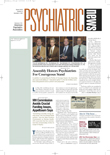The Canadian Rockies in November are a spectacular sight—snowy peaks burnished by a copper sun and set against an indigo sky. But for people who have a susceptibility to seasonal affective disorder (SAD), the Canadian Rockies are not a propitious place to be at this time of year, and even less so as the days grow shorter and darker.
The reason is that the mountains are located far north in the Northern Hemisphere, and the farther north people live, the greater their chances of having the disorder. One study, for instance, found the prevalence of SAD to be only 4 percent in Florida, yet 18 percent in the Canadian Arctic.
Latitude, however, does not seem to be the only risk factor for SAD. There seem to be at least three others —being a female, being a female with attention-deficit/hyperactivity disorder (ADHD), or being a female who has experienced postpartum depression.
These findings were revealed at the annual meeting of the Canadian Psychiatric Association in November in Banff, Alberta, during a session titled “New Insights Into Seasonal Depression.”
Being female is a strong risk factor for SAD, both Robert Levitan, M.D., an associate professor of psychiatry at the University of Toronto, and Maria Corral, M.D., a clinical professor of psychiatry at the University of British Columbia, concurred. Some 80 percent of SAD patients are female, Levitan said.
What’s more, women who have ADHD may be even more at risk of SAD than women in general, Levitan pointed out. For some eight years, while running a SAD clinic, he noted that a number of his SAD patients also had ADHD. So he suspected that there might be some connection between the two disorders. He then joined forces with colleagues at an adult ADHD clinic to do a study to see whether he could confirm his suspicion.
They gave a questionnaire to 130 ADHD patients at the clinic to determine whether they might also have SAD. Indeed, the incidence of SAD in this group turned out to be four times higher than one would expect in the general population, suggesting that SAD may have a link with ADHD.
Patients Sensitive to Environment
Such a link is perhaps not surprising, Levitan commented, since both ADHD patients and SAD patients are “very much tied to their environment”—that is, very sensitive to it.
But how might ADHD and SAD be related, since the former appears to involve a dysfunction of the neurotransmitter dopamine, whereas the latter seems to entail a malfunction in the neurotransmitter serotonin?
One possibility is that a mishap in dopamine action as well as in that of serotonin may underlie SAD, or at least those SAD cases that have an ADHD component.
For instance, Raymond Lam, M.D., of the University of British Columbia reported that he and his colleagues have found what appears to be the involvement of dopamine as well as of serotonin in a few cases of SAD. They depleted levels of dopamine in nine SAD patients and found that it made the patients depressed, even though it was summer and not the time of year when they usually got depressed. In contrast, when they gave the patients a placebo, it did not achieve the same effect. So they think that dopamine may be implicated in SAD.
Search for Gene Variant
Then Levitan and his colleagues studied 108 SAD patients to determine whether they carried a particular version of a gene that makes the so-called “D4” nerve receptor for dopamine. This particular gene variant has been strongly implicated as a susceptibility gene for ADHD. They found that a number of the patients, but not all, had this gene version. They also found that those patients who had this gene exhibited significantly more ADHD symptoms than did the patients without it. So the version of the dopamine receptor gene that underlies ADHD may also be implicated in SAD, at least in those cases of SAD that have an ADHD component.
As for a possible connection between SAD and postpartum depression, data come from a study that Corral and her colleagues conducted.
They recruited 62 women with postpartum depression, as well as 51 women who had recently given birth but who were not depressed. The two groups were similar in age, education, and marital status. Both groups were given the Seasonal Pattern Assessment Questionnaire to determine whether they experienced SAD.
The researchers found that 29 percent of the postpartum depression group, but only 12 percent of the control group did—a statistically significant difference—implying that there might be a link between SAD and postpartum depression in some cases.
These results may have some clinical implications, the session speakers pointed out. For instance, if a woman has both ADHD and SAD, then perhaps a treatment known to be effective for SAD, such as light therapy, might be able to suppress her ADHD as well as her SAD. Or if a woman who experiences postpartum depression also has a susceptibility to SAD, then light therapy might also be able to counter her postpartum depression.
Corral said that she has preliminary evidence that light therapy can counter postpartum depression and hopes to replicate her finding with a larger study sample. ▪

